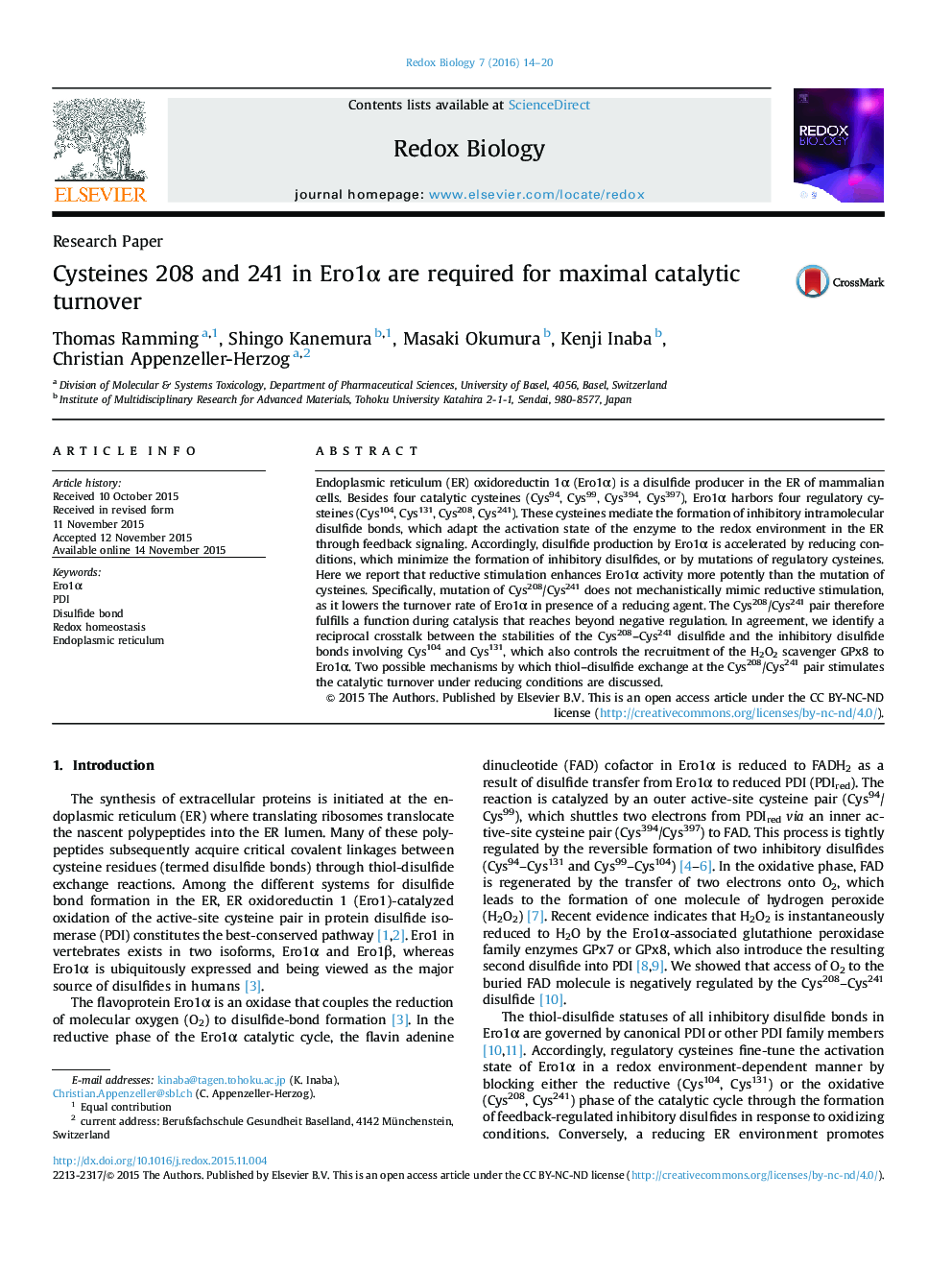| Article ID | Journal | Published Year | Pages | File Type |
|---|---|---|---|---|
| 1922831 | Redox Biology | 2016 | 7 Pages |
•Reductive stimulation enhances Ero1α more potently than cysteine mutations.•Cys208/Cys241 controls Ero1α activity beyond negative regulation.•Other regulatory cysteines communicate with Cys208/Cys241 within Ero1α.•Other regulatory cysteines control the binding of GPx8 to Ero1α through Cys208/Cys241.
Endoplasmic reticulum (ER) oxidoreductin 1α (Ero1α) is a disulfide producer in the ER of mammalian cells. Besides four catalytic cysteines (Cys94, Cys99, Cys394, Cys397), Ero1α harbors four regulatory cysteines (Cys104, Cys131, Cys208, Cys241). These cysteines mediate the formation of inhibitory intramolecular disulfide bonds, which adapt the activation state of the enzyme to the redox environment in the ER through feedback signaling. Accordingly, disulfide production by Ero1α is accelerated by reducing conditions, which minimize the formation of inhibitory disulfides, or by mutations of regulatory cysteines. Here we report that reductive stimulation enhances Ero1α activity more potently than the mutation of cysteines. Specifically, mutation of Cys208/Cys241 does not mechanistically mimic reductive stimulation, as it lowers the turnover rate of Ero1α in presence of a reducing agent. The Cys208/Cys241 pair therefore fulfills a function during catalysis that reaches beyond negative regulation. In agreement, we identify a reciprocal crosstalk between the stabilities of the Cys208–Cys241 disulfide and the inhibitory disulfide bonds involving Cys104 and Cys131, which also controls the recruitment of the H2O2 scavenger GPx8 to Ero1α. Two possible mechanisms by which thiol–disulfide exchange at the Cys208/Cys241 pair stimulates the catalytic turnover under reducing conditions are discussed.
Graphical abstractFigure optionsDownload full-size imageDownload as PowerPoint slide
